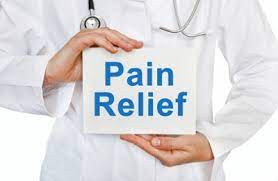If you are experiencing pain, physical therapy may be the solution for you. Physical therapy is a form of treatment that focuses on restoring function and mobility to the body. It can be used to treat a wide variety of conditions, including sports injuries, back pain, and arthritis. In this blog post, we will discuss what you need to know about pain physical therapy. We will cover the types of treatments offered, and how physical therapy can help relieve your pain.
Contents
- 1 Understanding Pain
- 2 Symptoms
- 3 What Causes Pain?
- 4 Does Physical Therapy Improve Pain?
- 5 How Physical Therapy Can Relieve pain?
- 5.1 Stretching
- 5.2 Massage
- 5.3 Heat/cold therapy
- 5.4 Strengthening
- 5.5 Aerobic exercise
- 5.6 Manual therapy
- 5.7 Electrical stimulation
- 5.8 Transcutaneous electrical nerve stimulation (TENS)
- 5.9 Ultrasound
- 5.10 Interferential current (IFC)
- 5.11 Radiofrequency ablation (RFA)
- 5.12 Spinal cord stimulation (SCS)
- 5.13 Percutaneous electrical nerve stimulation (PENS)
- 5.14 Neuromuscular electrical stimulation (NMES)
- 6 Conclusion
Understanding Pain

Pain is a complex and often misunderstood sensation. It is not simply a response to tissue damage, but rather a complicated mix of physical, emotional, and cognitive factors. A better understanding of pain can help you manage it more effectively.
Pain is an unpleasant sensation that serves as a warning sign of potential or actual tissue damage. It is a complex sensation that can be influenced by many factors, including your mood, emotions, and previous experiences with pain.
There are two types of pain: acute and chronic.
Acute pain is the normal, expected response to an injury or illness. It typically goes away as the underlying condition heals.
Chronic pain is pain that persists for weeks, months, or even years. It can be caused by an injury, illness, or underlying condition, such as arthritis. Chronic pain can also result from nerve damage (neuropathy).
Symptoms
There are various symptoms of pain:
The most common type of pain are:
Burning
This type of pain is often caused by inflammation, such as arthritis.
Shooting
This type of pain is often caused by nerve damage.
Stabbing
This type of pain is often caused by an injury, such as a knife wound.
Throbbing
This type of pain is often caused by an infection, such as a toothache.
What Causes Pain?
The Causes Of Pain are:
Disease
Many conditions can cause pain. Some diseases that cause pain include cancer, arthritis, and fibromyalgia. Cancer can cause pain in many different ways. The most common way is by pressing on nerves or other tissues. cancer can also cause pain by producing chemicals that irritate the lining of the nerves.
Injury
An injury to the body can also cause pain. This could be a sports injury, a car accident, or any type of trauma to the body.
Surgery
Sometimes the pain is caused by surgery. For example, if you have had a hernia operation, the pain may be caused by the way the surgery was performed. In this case, your doctor may refer you to a pain specialist.
Arthritis
Arthritis is a common cause of pain. There are many different types of arthritis, but the most common type is osteoarthritis. This type of arthritis is caused by the wear and tear of the joints.
Fibromyalgia
Fibromyalgia is a condition that causes pain in the muscles, tendons, and ligaments. It is often associated with fatigue, sleep problems, and depression.
Headaches
There are many different types of headaches, but the most common type is tension headaches. This type of headache is caused by muscle tension in the head and neck.
Low back pain
Low back pain is a very common type of pain. It can be caused by many different things, such as muscle strain, herniated discs, and arthritis.
Neuropathy
Neuropathy is a condition that causes damage to the nerves. This can lead to pain, numbness, and tingling in the hands and feet.
Postherpetic neuralgia
This is a type of pain that is caused by the herpes zoster virus. This virus causes a rash, which can lead to nerve damage. This nerve damage can cause pain that can last for months or even years.
There are many different types of pain, and each one has its own causes and treatments. If you are experiencing pain, it is important to see your doctor so that he or she can help you find the cause and provide the appropriate treatment.
Does Physical Therapy Improve Pain?

Physical therapy can be an effective treatment for pain. The goal of physical therapy is to help you improve your range of motion, flexibility, and strength. It can help in the following ways:
Reduced pain
Physical therapy can help to reduce pain by using a variety of techniques, such as massage, heat or cold therapies, and exercises.
Improved mobility
Physical therapy can help to improve your range of motion and increase your flexibility.
Greater independence
Physical therapy can help you regain your independence by teaching you how to perform activities of daily living.
Reduced stress
Physical therapy can also help to reduce stress and tension by teaching you relaxation techniques.
There are many different types of physical therapy. The type of physical therapy that is right for you will depend on your individual needs and goals. Some of the most
How Physical Therapy Can Relieve pain?

Pain is a common symptom that can be caused by a wide variety of conditions. It can range from mild discomfort to severe agony. Fortunately, there are many treatment options available to help relieve pain. One of these options is physical therapy (PT).
Physical therapy is a type of rehabilitation that uses various exercises and techniques to improve movement and function. PT can be used to treat a wide variety of conditions, including pain.
There are many different types of PT exercises and techniques that can be used to relieve pain. Some common ones include:
Stretching
Stretching exercises can help improve range of motion and flexibility, which can in turn help reduce pain. It includes:
Dynamic stretching: This type of stretching involves moving your joints through their full range of motion. This can help improve flexibility and reduce pain.
Static stretching: This type of stretching involves holding a position for a period of time. It can help improve the range of motion and reduce pain.
Massage
Massage therapy involves using various techniques to manipulate the soft tissues of the body. This can help reduce pain, improve range of motion, and increase blood flow.
Heat/cold therapy
Applying heat or cold to an area can help relieve pain. Heat can help relax muscles and increase blood flow, while cold can help reduce inflammation.
Strengthening
Strength-training exercises can help increase muscle strength and endurance, which can help reduce pain.
Aerobic exercise
Aerobic activities improve cardiovascular fitness and can also help reduce pain.
Manual therapy
Manual therapy is a type of PT that involves using the hands to massage, mobilize, and manipulate the soft tissues and joints. This can help reduce pain by decreasing muscle tension and improving the range of motion.
Electrical stimulation
This PT modality uses electrical impulses to stimulate the muscles and nerves. It can help reduce pain by decreasing muscle spasms and increasing blood flow.
Transcutaneous electrical nerve stimulation (TENS)
This therapy uses a mild electrical current to relieve pain.
Ultrasound
This therapy uses sound waves to create heat and increase blood flow, which can reduce inflammation and pain.
Interferential current (IFC)
This therapy uses a low-frequency electrical current to block pain signals from reaching the brain.
Radiofrequency ablation (RFA)
This therapy uses radio waves to create heat, which destroys the nerve that is sending pain signals.
Spinal cord stimulation (SCS)
This therapy uses a low-voltage electrical current to block pain signals from reaching the brain.
Percutaneous electrical nerve stimulation (PENS)
This therapy uses a low-voltage electrical current to stimulate the nerves and reduce pain.
Neuromuscular electrical stimulation (NMES)
This therapy uses a low-voltage electrical current to stimulate the muscles and reduce pain.
There are many different types of physical therapy that can be used to relieve pain. The best type of PT for you will depend on the cause and severity of your pain as well as your individual needs and preferences.
If you’re experiencing pain, talk to your doctor about whether PT may be right for you.
Conclusion
It may be concluded that pain physical therapy can be an effective treatment option for various types of pain. However, as with any type of therapy, it is important to consult with a pain specialist or medical doctor to determine if this type of therapy is right for you. If you are considering pain physical therapy, be sure to ask your therapist about their experience and success in treating patients with similar conditions.
Physical Therapy help patients recover from pain. If you’re experiencing Back pain, Shoulder pain, Knee pain, Neck pain, Elbow pain, Hip pain, or Arthritis pain, a physical therapist at MantraCare can help: Book a physiotherapy session


